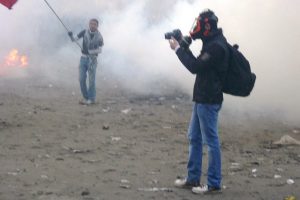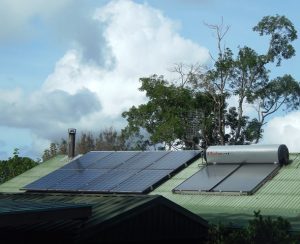
Australia is more culturally diverse than ever, according to the first results from the 2021 Census. Almost half our population of 25.76 million people have at least one parent born overseas. Almost a quarter of Australians (24.8%) speak a language other than English at home. Just over a quarter (27.6%) report being born overseas (Ed: and that includes him and me – Scotland and Canada’s loss is our gain, we modestly reckon).
In the five years since the last Census, India has become the second-most common overseas country of birth, shifting New Zealand and China down the list. The above chart from the Australian Bureau of Statistics shows the shifting demographic.
Dr Sukhmani Khorana, Senior Research Fellow, Western Sydney University, says the growing number of first-generation migrants means Australians’ ancestry will change significantly over the next decade.
“Australia will continue to change and look different, and we must ensure our institutions and policies reflect this,” Dr Khorana wrote in The Conversation.
“That work, by governments and policy makers, should begin now so they can gain trust and maximise the belonging of these communities. Research shows feelings of belonging lead to better socio-economic outcomes”.
Dr Khorana believes there would have been substantially more immigration were it not for the COVID pandemic with its restrictions and lock-downs.
Dr Khorana highlights an important item from the Census data:
- the number of people who are either born overseas or have a parent born overseas is greater than half (13.26 million people or 51.5%).
The data shows Australia is as multicultural or even more so than countries such as Canada, the United Kingdom and the United States. Canada’s latest Census (2016) showed that 21.9% of people were immigrants, led by people from South Asia. Similarly, data from the UK’s 2018 Census showed that 14% of the UK population was from a minority ethnic background. In the city of London, this figure was 40%.
Dr Khorana, who conducts research for migrant and refugee-focused organisations in Western Sydney, says Australia would have received more migrants had it not been for the COVID pandemic, which shut borders from early 2020.
Census data shows the pandemic led to an 80% decrease in the number of overseas visitors, which affected the tourism, hospitality and higher education sectors of the economy.
We also received fewer relatives of overseas-born Australians, for example on family-sponsored visas.
Our local refugee and migrant network organised an event in Warwick last Sunday. Visiting chefs prepared samples of ethnic food from five different countries. There was also music and dancing. About 60 adults and children showed up at St Mark’s Hall including two Hazara Afghan families wearing traditional dress.
Southern Downs Regional Council Mayor Vic Pennisi attended the event and made a short speech. Italian-born Cr Pennisi related his arrival in Australia as a child “with not one word of English”. He grew up in Stanthorpe in a time he acknowledged was not as friendly towards ethnic minorities as Australia is now.
“I left school after Grade 10 and now I’m Mayor of the Southern Downs Regional Council and only in a country like Australia could you do that.”
The event, ‘A Taste of the Southern Downs’, was open to the public, with cooking demonstrations and a chance to sample dishes from South Korea, China, The Philippines, Afghanistan and Nigeria.
Southern Downs Refugee and Migrant Network organized the event with the support of a grant from the Queensland Government and sponsorship from Acciona’s McIntyre Wind Farm Project.
Our contribution to the event was to set up our PA, make a multi-cultural music play list and present a short set of Australian folk songs. Our theme was the Anglo-Saxon immigrant experience. She Who Still Has a Canadian Accent sung ‘Un Canadien Errant’, a traditional French language song about a young Canadian exile forced to leave Quebec.
We learned two new songs, Farewell to old England and The Shores of Botany Bay, and performed my immigration story, Rangitiki.
Earlier, we listened to guest speakers who impressed me with their command of English language. Even though most grew up in Australia, if you are from Asia, knowing what ‘cooking from scratch’ means is quite impressive stuff. Few of us could translate this to any of the many Asian dialects!
Likewise, a Hazara Afghan and friend of our group, related his story coming from Afghanistan as an unaccompanied minor in 2012. Now a confident young man with a good command of English, he gave some insights into the sacrifices refugees make when forced to flee their home countries. After a decade in Australia, he has only recently been re-united with his family.
Donations were raised for a Melbourne group, Hazara Women for Change. This group aims to support the ongoing education of Afghan women. Afghanistan’s rulers, the Taliban, have shut down schools and forbid women from receiving an education. That’s the least of the worries for persecuted minorities like the Hazara trying to survive within Afghanistan.
The United Nations recently released a report voicing concern over the Taliban authorities’ carrying out human rights violations with impunity. This included extra-judicial killings of individuals accused of affiliation with armed groups, but also cruel, inhuman, and degrading punishments, and excessive use of force by Taliban officials.
The report documented a total of 237 extra-judicial killings. Most of them (160), targeted former members of the Afghan military and government.
No matter how uncertain their future may be as refugees in Australia, Afghan citizens who were evacuated last August will be grateful to be here, although lamenting those family members left behind.
I had to do some digging to establish the 2021 population of people born in Afghanistan. As you might expect, given the upheaval in that country since the last Census, the Afghan population here has grown from 46,800 in 2016 to 67,030 in mid-2021. And that was before the Taliban came back and some 4,100 people with Australian visas were evacuated to this country, many of them Afghans. For perspective, there are about eight million Hazaras living in Afghanistan and neighbouring Pakistan.
While Australia is a multi-cultural country, the population is still dominated by English-speaking people who were either born here or came from countries where English is the first language.
The top five most common places of birth (outside Australia) are led by England (468,465), India (362,187), New Zealand (267,327), China (239,951) and the Philippines (113,035), followed by Vietnam, South Africa, Italy and Malaysia. People who ticked the ‘born elsewhere’ box numbered 364,949 (includes countries not identified individually by the respondent and people born at sea).
People from the UK still rank among the top five sources of ancestry including English (33%), Irish (9.5%) and Scottish (8.6%).
In his election campaign in May, then Opposition leader Anthony Albanese said becoming prime minister with his Italian surname would proves “you can do anything in this country”.
“We’re a diverse country, and the fact that I have a non-Anglo-Celtic name … I think it sends a message out there hopefully to multi-cultural Australia that you can achieve anything in this country,” he said after being elected in May.
Indeed. We also have a Senate leader named Wong.
It wasn’t always like that.
FOMM back pages (2018)





